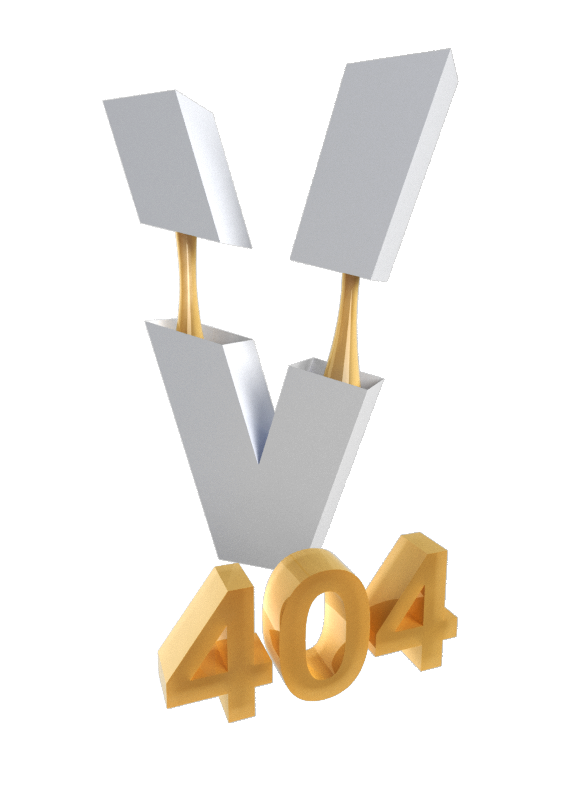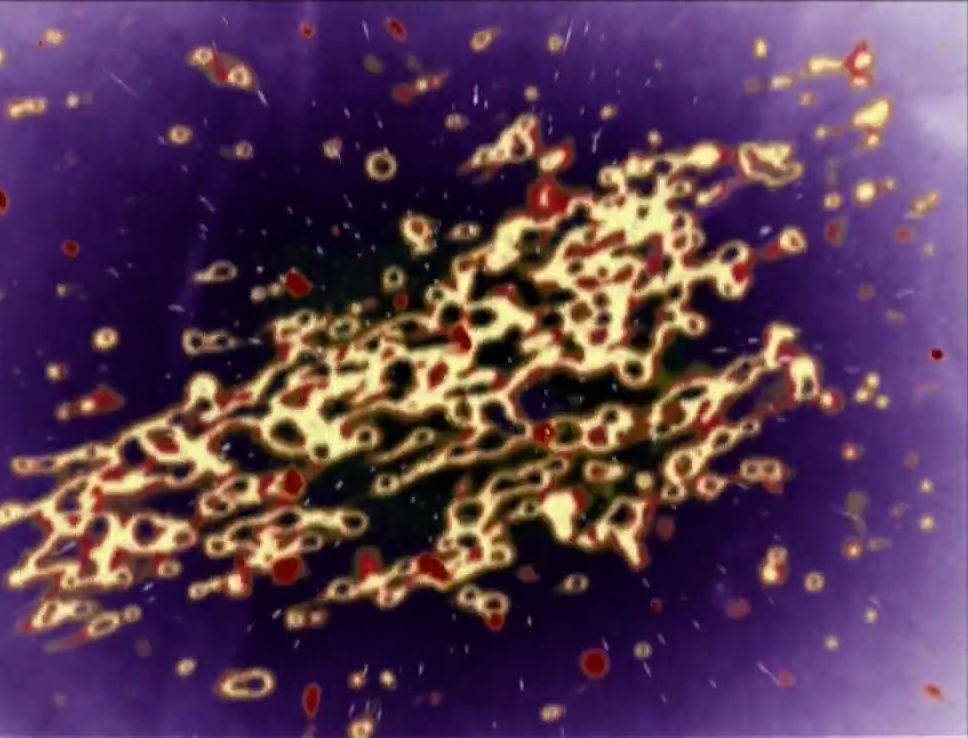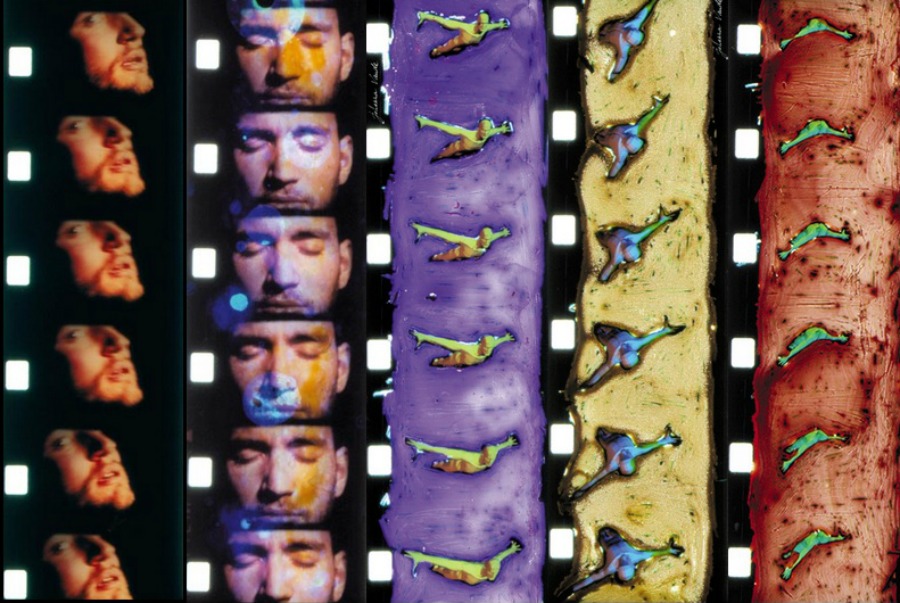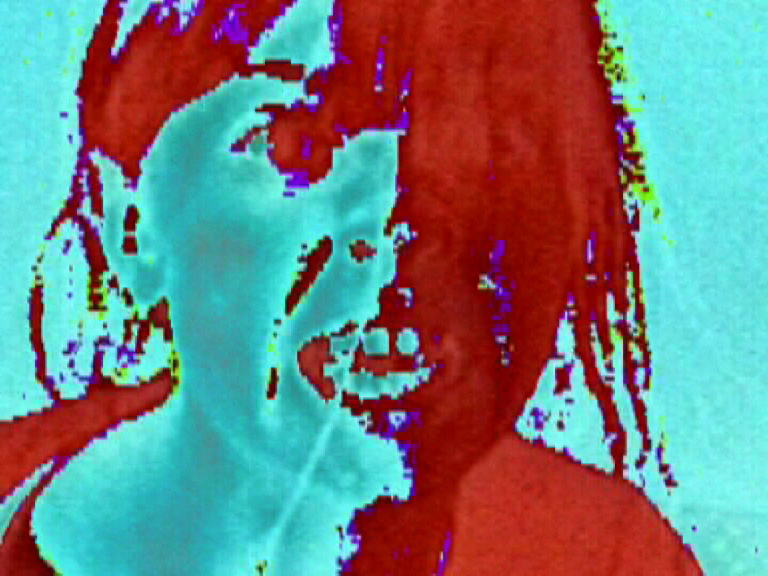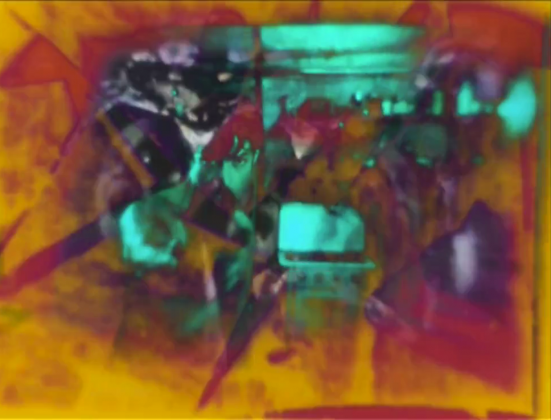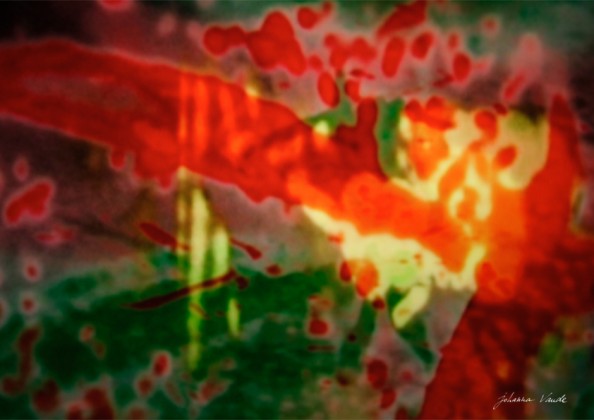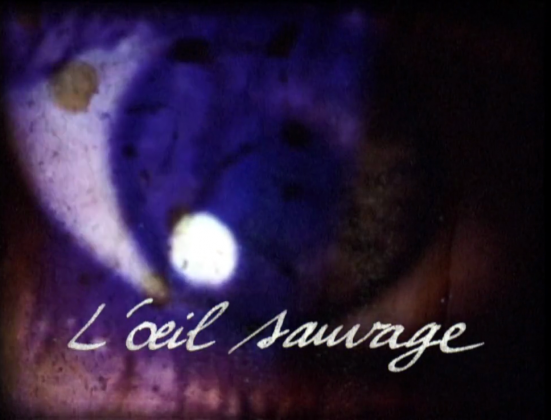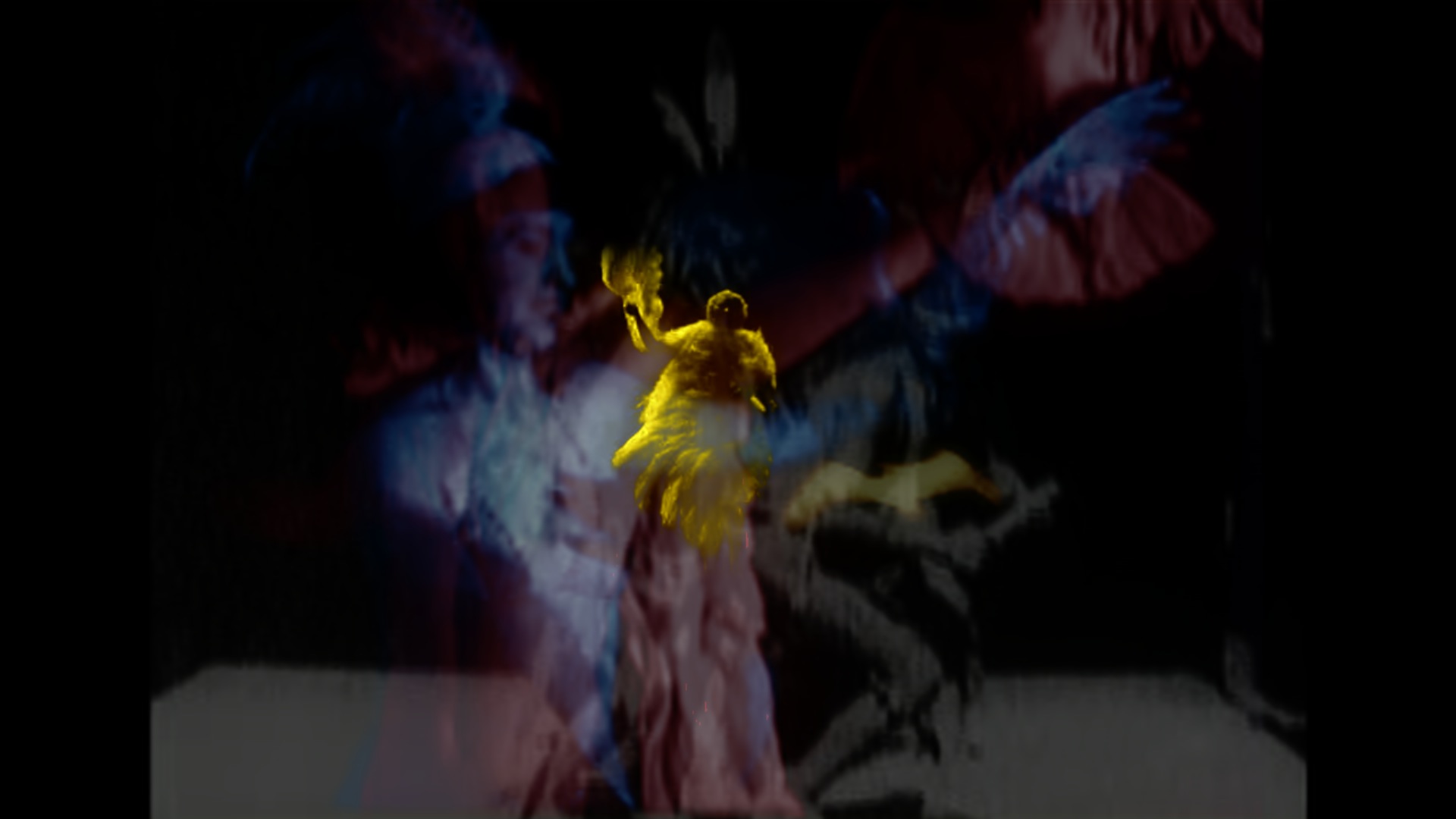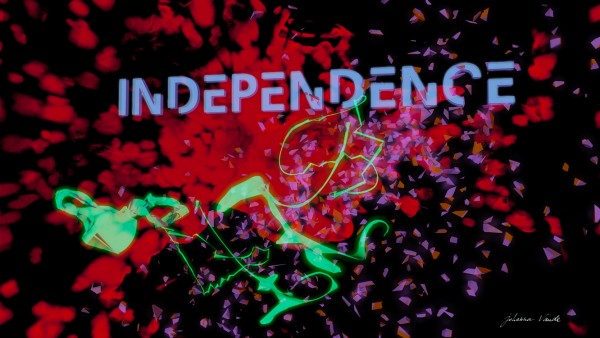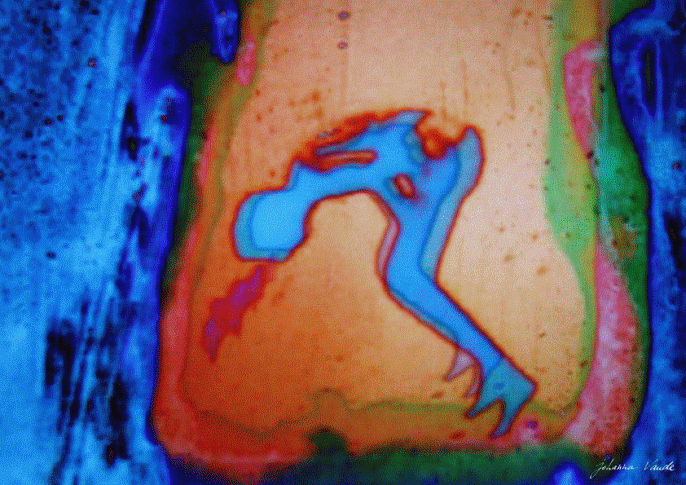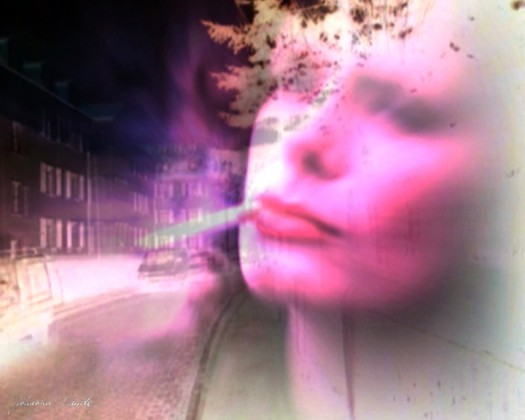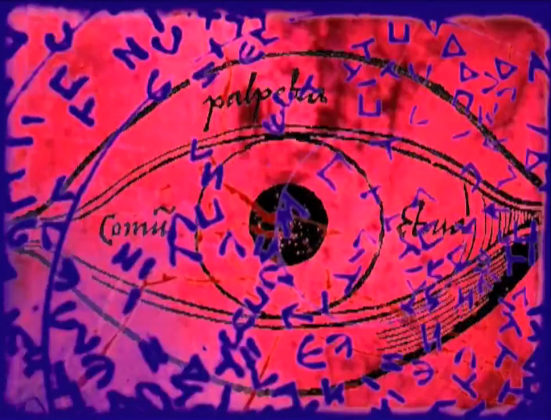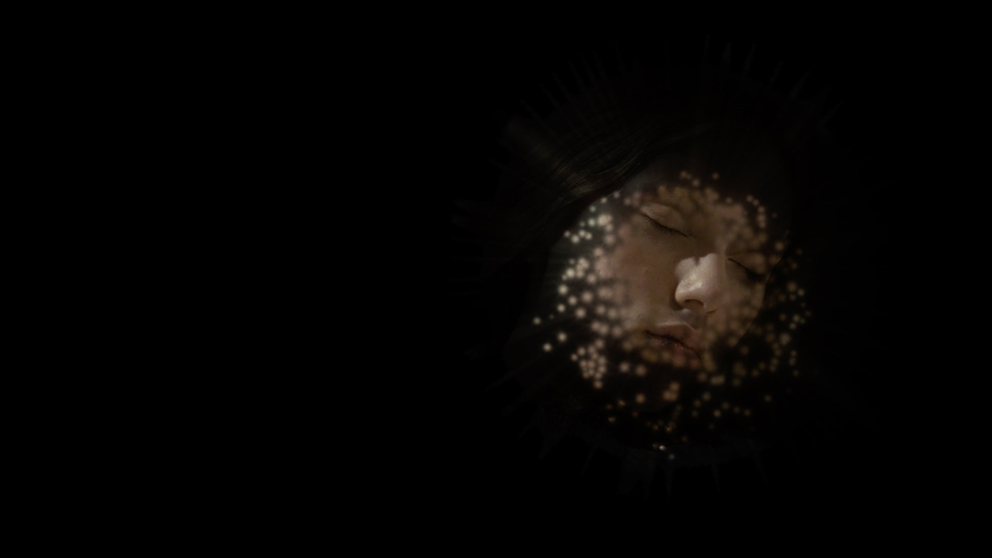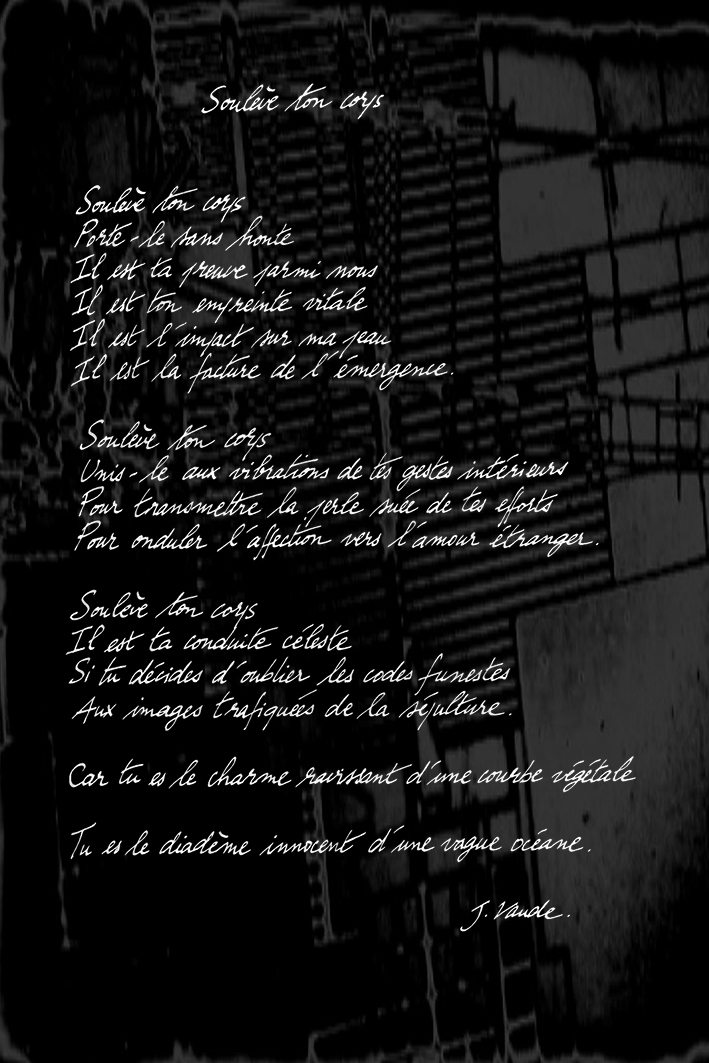[No limits for vision-johanna vaude]
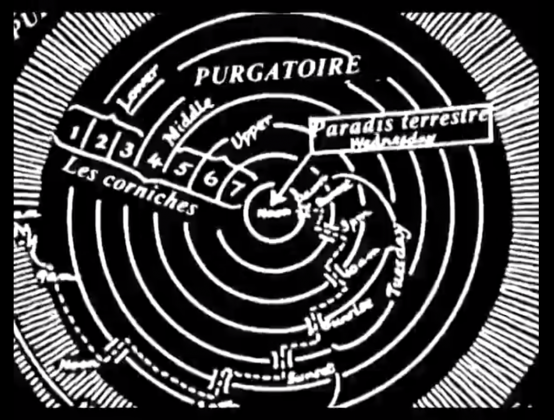 La artista y cineasta , JOHANNA VAUDE crea películas eclécticas. Conforme se va desarrollando, su arte revela varios períodos, a partir del Super 8 y de las películas pintadas a mano, para luego ir a la hibridación y la mezcla de medios, técnicas y géneros. Sus películas y videos, sobre la base de la relación entre las imágenes y el sonido, ponen el tacto en una gama muy amplia de temas. Ella propone un cine libre y salvaje, sin reglas y dogmas. Con su técnica muy especial de hibridación, su trabajo va más allá de los límites establecidos.
La artista y cineasta , JOHANNA VAUDE crea películas eclécticas. Conforme se va desarrollando, su arte revela varios períodos, a partir del Super 8 y de las películas pintadas a mano, para luego ir a la hibridación y la mezcla de medios, técnicas y géneros. Sus películas y videos, sobre la base de la relación entre las imágenes y el sonido, ponen el tacto en una gama muy amplia de temas. Ella propone un cine libre y salvaje, sin reglas y dogmas. Con su técnica muy especial de hibridación, su trabajo va más allá de los límites establecidos.
En octubre 2014 su película System Overload se proyectó en la Muestra de Cine realizado por Mujeres en Zaragoza, España, su pieza de videoarte I told you this would happen se proyectó en la Universidad de Rochester (Nueva York), en un ciclo comisariado por Scott Hammen que constaba de selección de cortometrajes experimentales europeos que ofrecían una muestra de la variedad y la vitalidad de la actividad actual de la vanguardia europea comunidad la imagen en movimiento y Notre Icare fue la portada de la prestigiosa revista Millennium Film (MFJ), uno de las más publicaciones más antiguas dedicada a artistas de la imagen en movimiento, y participó con dos de sus películas en el tributo a Harun Farocki organizado por la revista. Su último trabajo es un increíble homenaje a la actriz Scarlett Johansson: 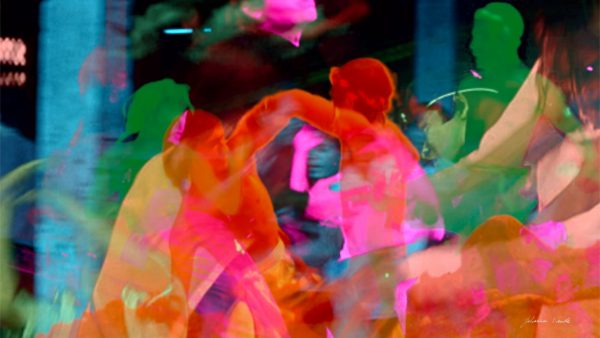 “He creado la música original inspirada en la actuación, la voz y las palabras de Scarlett Johansson en sus películas, basada en un poema medieval a quien ella cantanba a capella en la películaThe other Boleyn girl. y descubrí que este poema llamado « Westron wynde » se cantaba en las tabernas y ha influido en una serie de artistas como Igor Stravinsky “.
“He creado la música original inspirada en la actuación, la voz y las palabras de Scarlett Johansson en sus películas, basada en un poema medieval a quien ella cantanba a capella en la películaThe other Boleyn girl. y descubrí que este poema llamado « Westron wynde » se cantaba en las tabernas y ha influido en una serie de artistas como Igor Stravinsky “.
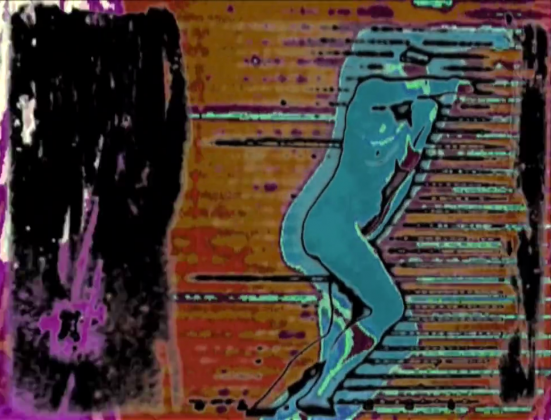 Algunos sectores no consideran el tratamiento digital como experimental, pero de hecho, como señala Johanna Vaude, las películas experimentales siempre han sido híbridas utilizando herramientas tales como la pintura, la fotografía, y ahora las nuevas herramientas digitales.El Cine sigue siendo un arte y una herramienta relativamente joven, que todavía no ha experimentado todas sus variantes. La industria que domina, impone ciertas herramientas, por lo que en el cine experimental los creadores encuentran más libertad. Vaude hace sus films de una manera tradicional, utilizando los recursos más baratos y más accesibles, comenta Johanna que cuando se quiere decir algo, siempre encontramos una manera de hacerlo, también como parte de un punto de vista científico para hablar de hibridación, ya que este término se deriva principalmente de la ciencia.
Algunos sectores no consideran el tratamiento digital como experimental, pero de hecho, como señala Johanna Vaude, las películas experimentales siempre han sido híbridas utilizando herramientas tales como la pintura, la fotografía, y ahora las nuevas herramientas digitales.El Cine sigue siendo un arte y una herramienta relativamente joven, que todavía no ha experimentado todas sus variantes. La industria que domina, impone ciertas herramientas, por lo que en el cine experimental los creadores encuentran más libertad. Vaude hace sus films de una manera tradicional, utilizando los recursos más baratos y más accesibles, comenta Johanna que cuando se quiere decir algo, siempre encontramos una manera de hacerlo, también como parte de un punto de vista científico para hablar de hibridación, ya que este término se deriva principalmente de la ciencia.
“Haciendo una de Darwin y los libros de biología vi que el cine experimental era lo mismo, un organismo vivo que está evolucionando y cambiando, como sucede en todas partes en la naturaleza. De lo contrario, las cosas se pierden. Lo que es interesante es ver cómo se transforman las creaciones para así seguir viviendo en otra forma “
Hybrid es una selección de películas de Johanna Vaude. Cada película desarrolla su propio lenguaje, un tema distinto, y nos introduce en su singular universo, donde la hibridación de medios y técnicas utilizados nos ofrece imágenes de una poética inesperada. Hybrid contiene L’oeil sauvage que expresa nuestra manera de ver. Es el viaje de un ojo que se abre al mundo (tanto a nuestro mundo interior como al “mundo real”). Se ve dentro de sí misma, se abre a otras maneras de ver, a otros lugares donde la metamorfosis es posible, visible y táctil. En Notre Icare (Nuestro Ícaro), un hombre se enfrenta a imágenes violentas del mundo. Su Icaro reacciona y dispara. Notre Icare es una película que nos planteas grandes preguntas a las que cada uno tendrá su propia respuesta: ¿por qué utilizamos sufrimientos reales como producto de consumo y entretenimiento? ¿Queremos correr el riesgo de salir del laberinto que nosotros mismos creamos?
Tenemos que volver a llamar a nuestro Icaro, para despertarlo juntos …este Icaro dormido en cada uno de nosotros… y así poder crear un deseo. En Samouraï tres patrones animan y dan ritmo a la película: el silencio de un hombre (la mente a través del cuerpo, la energía), el loto (la misión), y un niño (la ética). El silencio de un hombre representa el espíritu caballeresco, el compromiso y la lucha solitaria impulsada por un código ético. El pensamiento, el alma o la mente en busca de la perfección se expresan físicamente a través de un movimiento, una acción. La precisión del Samouraï pasa por la espada que sirve para una causa. Luchamos, actuamos con todo nuestro cuerpo, todo nuestro deseo. No importa si usamos la espada del samouraï o el pincel del pintor … un arma para cada uno, pero siempre luchamos.
de películas para Hybrid?
mi película « Tryptique : She’s gone away… »
no fue elegida debido a que la película se rodó
en DV y se hizo el corte en digital. Lowave decidió
llamar al DVD «Hybride»,
y yo acepté este punto de vista acerca de mi trabajo.Mi primera película «Autoportrait y le monde», que es una mezcla de película Super 8 y Hi8, tampoco fue incluido, porque no tenemos tanto espacio en el DVD, y también porque, especialmente para esta edición tenía que recrear todas las bandas sonoras. Fue un gran trabajo en un tiempo muy corto y no tenía suficientes músicos para cada película. Para ser más precisos, cuando comencé a realizar mis películas, yo solía tomar pistas originales de la música electrónica. Yo estaba muy inspirado por músicos electrónicos como Photek o Autechre. En este momento yo no esperaba que mis películas serían de interés para la comunidad experimental francesa y por desgracia yo no tenía los derechos de autor de las pistas porque estaba trabajando sin ningún productor. En 2005 empecé a crear mis propias bandas sonoras, porque me di cuenta que yo siempre me sentiría bloqueada en mi trabajo si no cambiaba esto. Pero fue una gran experiencia artística a colaborar con músicos. He aprendido mucho de ellos: (Remy Laurençon para «Samouraï» y «Notre Icare», Eric Fischer para «L’oeil sauvage» y Xavier Seyse, Thomas & François Bouffard para «Totalité remix»)!
– Con tu trabajo creas un lenguaje propio, ¿qué técnicas sueles utilizar?
mis sentimientos, mis sueños, mi imaginación creativa y reflexiones …
La experimentación para mí,es un gesto artístico: al crear, exploras muchas formas. Por eso me inspiré en una investigación visual en el cine experimental como el cine con pintura manual, o la combinación de ficción y la investigación visual en películas como «2001, Una odisea del espacio», y también en la animación para disparar fotograma a fotograma para crear movimiento, por actuación y también en las nuevas tecnologías emergentes en este momento. Si ves mis películas se pueden reconocer muchas fuentes de inspiración en el arte: fotos, videos, todo tipo de cine, la pintura, la poesía, la música, el canto … Todo eso para expresar algo. Trabajé sin presupuesto, por eso usé estas herramientas (Super 8, 3D, imágenes, vídeo Hi8, pintura) y creé mis propios efectos especiales. Ahora la película Super 8 es, por desgracia cada vez más caro.
Pero lo más importante es no utilizar siempre la misma forma de la creación y repetir las mismas técnicas. Lo más importante para mí es seguir, expresar mis ideas y explorar nuevas posibilidades. Se puede notar que mi trabajo se basa en la edición, al igual que el ritmo de escritura, o las conexiones de la mente y sus fluctuaciones. he utilizado también imágenes como símbolos y éstos puede contener muchas informaciones. Los símbolos son como un resumen de muchas páginas.
cuéntanos un poco más sobre ello.
Al igual que la visión de un mundo.
Laura del Moral
A
A continuación el texto traducido a inglés:
Artist and director, JOHANNA VAUDE creates eclectics movies. As it develops, her art reveals various periods, starting from Super 8 and hand painted films, then going to hybridization and mix of medias, techniques and genres. Her films and videos, based on the relation between images and sound, touch on a very wide range of themes. She proposes a free and wild cinema, without rules and dogmas. With her very special hybridization technique, her work goes beyond established boundaries.
Her films and videos are shown through out the world and focuses are devoted to her in spite of the fact that they are produced out of the traditional ways (MK2 Beaubourg, Cinémathèque Française, LUX National de Valence, Festival Côté Court de Pantin, Pesaro Film Festival, and more…). It has earned her a TV portrait for Court-Circuit on ARTE channel. In 2006, Nicole Brenez, Head of the Avant-garde Programs at the Cinémathèque Française, gives her carte blanche for a series of film shows entitled « Hybridization : the experimental cinema and the new technologies according to Johanna Vaude ».
Johanna Vaude searches for the medial border crossing. Aside of the film photography she also uses painting and video for her “plastic hybridations”, which shows unmistakably esthetical relations to a “direct film” by Stan Brakhage, but first through the over painting of the previously taken photographic picture. Through the molding of photographic and electronic picture Vaude achieves very haptic, abstract picture worlds, which resemble a view through a microscope in the search for the structure and the materiality of life.
In october 2014 her film System Overload was screened for the Muestra de Cine realizado por Mujeres Zaragoza, in Spain, her video art I told you this would happen was screened at the University of Rochester (New York) where the curator Scott Hammen who was presents a selection of European Experimental short films was offer a taste of the variety and vitality of current activity in the European Avant-Garde moving-image community and Notre Icare was making the cover of the famous Millennium Film Journal (MFJ), one of the oldest continuously published journals of artists’ moving image works, and she participated with two of her films in Harun Farocki tribute organized by the journal. Her last work is an amazing tribute to the actress Scarlett Johansson : “I created the original music inspired by the acting, the voice and the words of Scarlett Johansson in her films, based on a medieval poem whom she is singing a capella in the movie The other Boleyn girl. I discoverd that this popular medieval poem named « Westron wynde » was sung in the taverns and has influenced a number of artists such as Igor Stravinsky”.
After a boom in the 70s, experimental film had almost disappeared in artistic practice in France, video art had replaced. There were festivals, filmmakers and projections but it is from the 90s when it starts to be a group of independent filmmakers. Johanna Vaude‘s films are capable of fusing various video art techniques, her works it does not contain dialogs, she modifies and denser images and rhythm with the use of music. Some sectors do not consider the digital treatment as experimental, but in fact, as mentioned Johanna Vaude, experimental films has always been hybrid using tools such as painting, photography, and now the new digital tools.
Cinema remains an art and a young tool, which has not yet experienced all its variants. The industry that dominates, imposes certain tools, so in experimental film more freedom to the creator. Vaude makes her films in a traditional way, using the cheapest and most accessible resources, she says that when you want to say something, we always find a way to do it, also as part of a scientific point of view to speak of hybridization, since this term derives mainly from science.
“So reading Darwin and biology books saw that the experimental cinema was the same, as a living organism that is evolving and changing, as happens everywhere in nature. Otherwise, things are lost. What is interesting is to see how things are transforming the creations to continue living in another form”.
-How was the selection
of films for Hybride?
The selection was based on my films which
are mixed different medias. For exemple,
my film « Tryptique : She’s gone away… »
was not choosen because the film was shot
in DV and cut in digital. Lowave decided
to name the DVD « Hybride »,
and I accepted this point of view about my work.
My first film « Autoportrait & le monde », who is a mix of Super 8 film and Hi8, was also not included, because we didn’t have so much space on the DVD, and also because, specially for this edition I had to recreate all the soundtracks. It was a big work for a short time and I didn’t have enough musicians for each film. To be more precise, when I started to realize my films, I used original tracks taken from electronic music. I was very inspired by electronic musicians like Photek or Autechre. At this time I didn’t expect that my films would be interest more people than the french experimental community and unfortunately I didn’t have the copyright of the tracks because I was working alone with no producer. In 2005 I started to create my own soundtracks, because I realized that I will always be stoppe in my work if I didn’t change this data. But it was a great artistic experience to collaborate with musicians. I learned a lot of them : (Remy Laurençon for « Samouraï » and « Notre Icare », Eric Fischer for « L’oeil sauvage » and Xavier Seyse, Thomas & François Bouffard for « Totalité remix ») !
-With your work you have created an own language. What techniques do you use?
I created my own language because in each film I have something to express. The techniques in my work is not very important for me, this is just a visual result to illustrate my ideas, my feelings, my dreams, my creative imagination and reflexions…
Experimentations are natural for me, that’s an artistic gesture : when you create, you explore many ways. That’s why I was inspired by some visual research in experimental cinema such as hand painting film, or the combination of fiction and visual research in films like « 2001, a space odyssée » but also by animation like shooting frame by frame to create movement, by acting and also by new technologies emerging at this time. If you watch my films you can recognize many sources of inspiration in art : photos, videos, all kind of cinema, painting, poetry, music, song…All that to express something.I worked with no budget, that’s why I used these tools (Super 8, 3D, pictures, video Hi8, painting) and created my own special effects. Now the Super 8 film is unfortunately becoming to expensive.
But the most important is not to use always the same way of creation and repeat the same techniques. The most important for me is to continue to express my ideas and exploring new possibilities. But you can notice that my work is based on editing (image cut), like writing rhythm, or mind connections, mind fluctuations.I also used images as symbols, and symbols can contain many informations. Symbols are like a summary of many pages.
-The importance of music should be noted, as something organic,
Do you usually compose the music yourself?
I started making my own soundtracks in 2005,but I still love to work with musicians andI continue this kind of collaborations. You will see in the future… The soundtracks are very important, because sounds and images are connected in my work, they are my langages. I think that music is an universal langage, through sounds we can understand other emotions, ideas.
-Your films are also becoming just a reflection on the images, a kind of dialogue with who looks…Do you think the responsibility of the transformation that you operate in the viewer?
The reflection of my work is not only on the images. The images are just a reflection of an inner expression. I explore my interiority and in the same time I question the interiority of the viewer. I want to take him deep in his subjectivity. The place of the dreams, of the emotions and feelings, place where the reason is not the master, but where it is sharing the space with intuition, beyond the frontiers that we learned. My collaboration for Blow Up Arte is very interesting for me, because Luc Lagier asks me to have a reflection on the cinema through images and sounds, without the traditional way of analysis by writing. I’m very free, and I can explore more the form of synthesis. The exercice is very inspiring for me, because I try to create video mashup with different reading levels. I hope that the viewer sees it, and questions himself through famous cinema images. I also try to trigger feelings and reflexions on the viewer without using traditional way of relating a story. You can also notice that I still use rhythm (cut editing), inner point of view and symbols, like in poetry.
Also you make poems and graphic poetry,
tell us a bit more about it.
Poetry is images and sounds, poetry is intuition. Before making films I wrote a lot of poetry to express myself and try to understand the interaction between the external and internal world. Poetry can be made with words, music, painting or film. Poetry is like a dream you try to define with the memory of your feelings.
Like a vision of an invisible world.Poetry is more interesting for me if you can hear it, not only read it. Hear the poetry and see deep inside.I use the term of graphic poetry because I prefer using my hand writing for poetry.This is like an individual print translating the rhythm and the characters of words.
